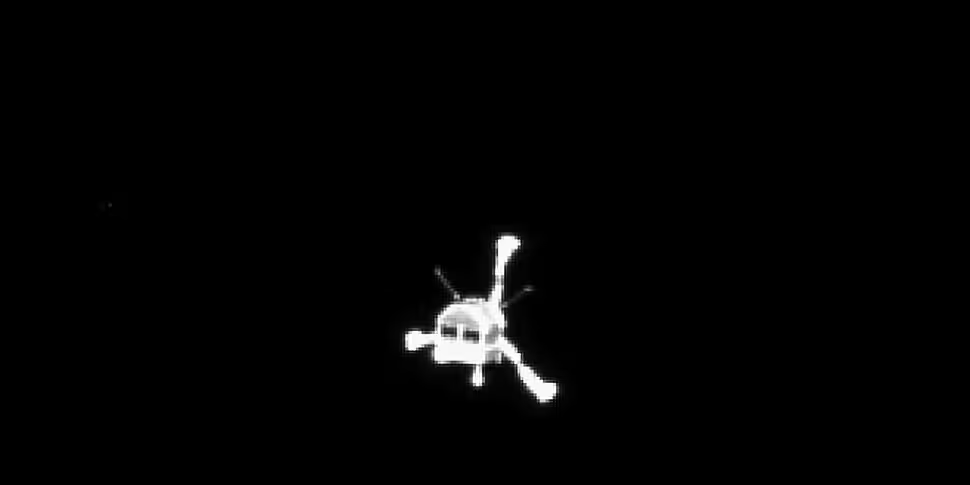The European Space Agency says the comet probe Philae has woken up seven months after scientists lost contact.
Philae, a 100kg robot lab, was dropped on to the surface of Comet 67P by mothership, Rosetta, last November after a 10-year trek.
Philae's mission was to unveil the secrets of comets which some experts believe may hold the secrets to how the Solar System was formed.
But instead of attaching itself to the iceball's surface, the little lander bounced and settled at an angle in a dark ditch.
It worked for 60 hours before going to sleep when its solar-powered battery ran flat but the comet has now sparked into life, transmitting signals for two minutes, as well as 40 seconds worth of data.
Some of the data was historical, indicating that Philae may have been awake earlier but unable to communicate with Rosetta.
Stephan Ulamec, project manager at the German Aerospace Centre, DLR, said: "Philae is doing very well. The lander is ready for operations."
The space probe's Twitter account, run by the Lander Control Center LCC in Cologne, announced the revival, tweeting after a seven-month silence: "Hello Earth! Can you hear me?"
Then in a tweet the space agency wrote:
Hello @Philae2014 !!! Is that really you? So glad to hear from you, how are you? https://t.co/50Y1E8Z2mN
— ESA (@esa) June 14, 2015
After a reply saying the rest had been seven months, the Philae account tweeted back
Wow @ESA_Rosetta! That’s a long time… time for me to get back to work! #Lifeonacomet
— Philae Lander (@Philae2014) June 14, 2015
In November the Rosetta Mission had successfully landed the probe on comet 67P/Churyumov-Gerasimenko amidst much jubilation and fist-pumping in the European Space Agency's headquarters.
The comet is 300 million miles away and ESA director general Jean-Jacques Dordain had told a delighted audience: "This is a big step for human civilisation."
But just a few days later, the agency said all systems on board the craft had shut down and the comet probe, roughly the size of a dishwasher, had entered as "possibly long silence".
"Prior to falling silent, the lander was able to transmit all science data gathered during the first science sequence," Stephan Ulamec said.
"This machine performed magnificently under tough conditions, and we can be fully proud of the incredible scientific success Philae has delivered."
The European Space Agency had announced earlier this week that they had discovered a bright spot on the comet described as "a good candidate" for the missing lander.









